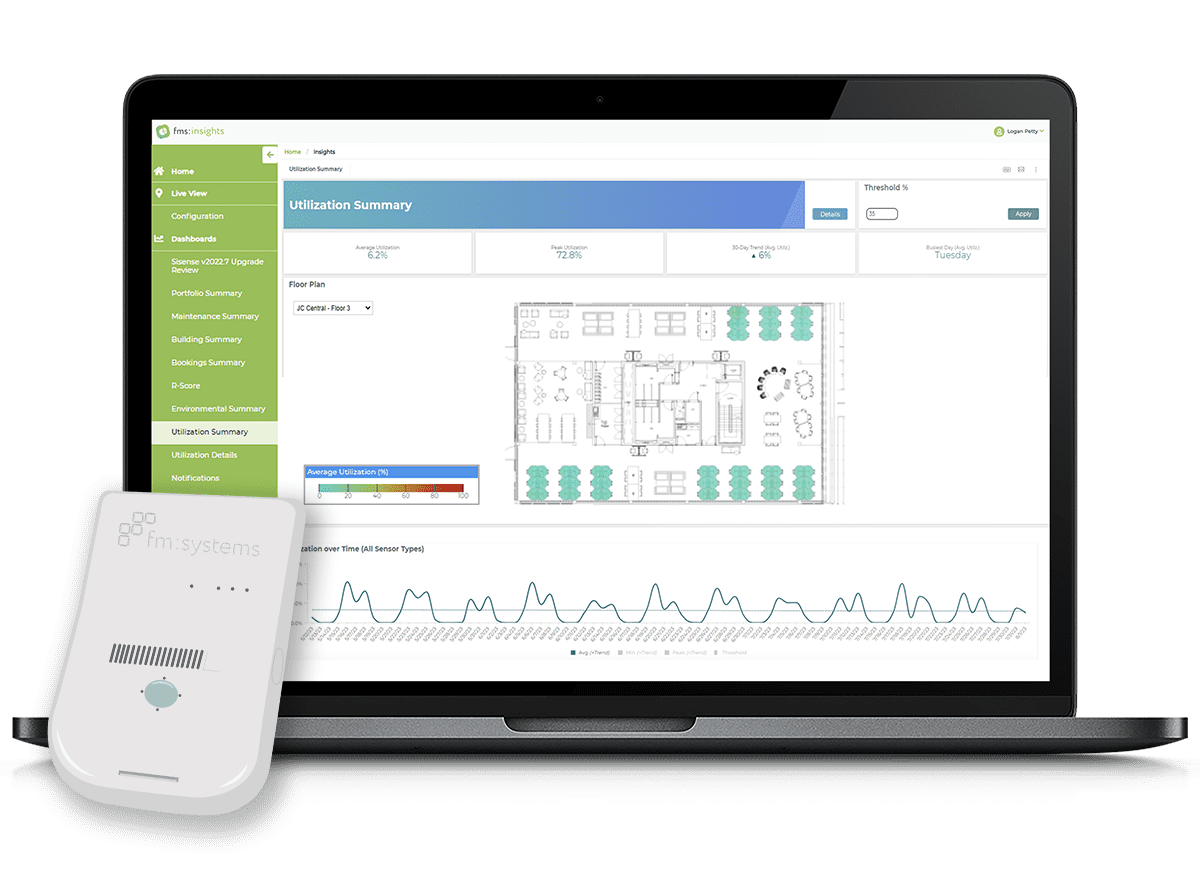
Gain Powerful Insights with Sensor Data
FM:Systems’ sensor analytics unifies occupancy and environmental data to provide organizations with the information they need to make educated and cost-effective decisions about the work environment. With empirical sensor data, you are empowered to make strategic decisions about the workspace allocation that is most conducive to employee productivity.
Using Sensor Analytics for cost reductions and future space planning
The International Facility Management Association (IFMA) predicts that these Internet of Things (IoT) devices can support a 50% increase in cost efficiency, including energy, maintenance and other recurring costs.
Businesses that can accurately capture occupancy and environmental data will also be poised to develop agile work strategies and design office space that reflect the way people actually work. Learn more about the benefits of installing occupancy sensors.

Accessible, Easy-to-Use Sensor Analytics
Users can set up new sensor surveys, manage existing surveys and create utilization reports
Real-time sensor data give insights into occupancy trends, organizational behavior, and company culture
Utilization data at every level – from the portfolio level down to individual desks.
Objective Space Utilization Data
Sensor Analytics reports can be used to inform a wide range of decisions and management reports. Current users typically employ the sensors to garner a greater understanding of existing space utilization levels, as a basis from which to plan robust agile working strategies, as a mechanism to incentivize better use of existing workspace and as a factual cross-check of actual space utilization versus room bookings. The true, continual, 1:1 space utilization monitoring that the sensors enable, is empowering organizations and paving the path to workplaces designed and planned with hard facts, not assumptions.
Using outdated methods of floor-walk head counts, making guesses based on room bookings, coffee cups, screensavers or coats on chairs have long since expired.
clients
say
-Allan Harty, Assistant Director, Cumbria County Council














